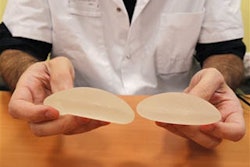It’s difficult to pass up a good deal. Like moths to a flame, consumers flock to clearance racks, scour thrift stores and dig through rummage sales. The proverbial instinct to hunt and gather takes hold in all of us at some point, leading us to seek out red-tagged game and bring our trophies back to our families, chests puffed out in pride.
Who wouldn’t be impressed with such skills? Saving a bundle takes time, effort, and sometimes some strategic planning (just ask an avid coupon clipper!). If you are willing to put in the effort, savings can be found in every arena — you can even find ways to save money on manufacturing equipment.
Lucky scavengers occasionally find a trophy: a rare antique cast aside by a naive owner, a beautiful piece of art for 50 cents or a designer pair of shoes marked down to half price. But manufacturers may be overlooking their own trophy: legacy equipment that can be refurbished so that it is as beneficial as a new piece of equipment, without the new equipment price tag.
Chem.Info’s sister publication, Food Manufacturing, conducted a survey in 2009 about refurbished and used equipment. In their survey, 85 percent of their readers reported “that their plants are involved on some level with the buying and/or selling of used equipment.” Cost savings were the most commonly hailed benefit, but their readership also cited immediate availability, interchangeability/consistency and environmental implications as additional benefits.
There’s no doubt that refurbishment has the potential to become even more popular in 2012. The benefits of refurbished equipment can stretch far beyond cost savings, providing manufacturers with a solution that offers many perks and presents few drawbacks. And in these tough economic times, you can’t put a price on savings.
For a previous article, I interviewed Dave Mitchell from ETC USA, a company that offers sterilization systems to the pharmaceutical industry. Mitchell noted that he has recently seen an increase in refurbishments. In 2011, his company rebuilt numerous systems, and those refurbishments helped their clients “save 40 to 50 percent over the cost of a new chamber.”
Before hearing these figures, I was in the dark when it came to equipment renovation. After hearing about the savings potentials, however, I could easily see why so many manufacturers are turning to refurbishment. With the current state of the economy, cost-efficient equipment is a hot commodity. And, if that cost efficiency comes with accessibility and environmental benefits (among others), that’s a deal that’s hard to pass up.
Luckily, manufacturers have no shortage of places to turn for refurbishment services: From robot manufacturers to mill manufacturers, many companies are making refurbishment services available to their customers.
A quick search on YouTube turns up before-and-after videos that are pretty miraculous, showing equipment being transformed from dilapidated ugly ducklings into revamped swans. The amount of work that goes into these refurbishments makes it apparent that it’s the thrifty route, but not the lazy route.
Yes, there are times when new equipment is the best option, but in many cases, refurbishment can be a great alternative. If you enjoy hunting for bargains and rifling through sales bins, you may enjoy getting your plant involved in the world of equipment refurbishment. Refurbishment can breathe new life into old machines, allowing your company’s pocketbook to have a happy New Year, too.
What do you think? Let me know by emailing me at [email protected] or commenting below.


















